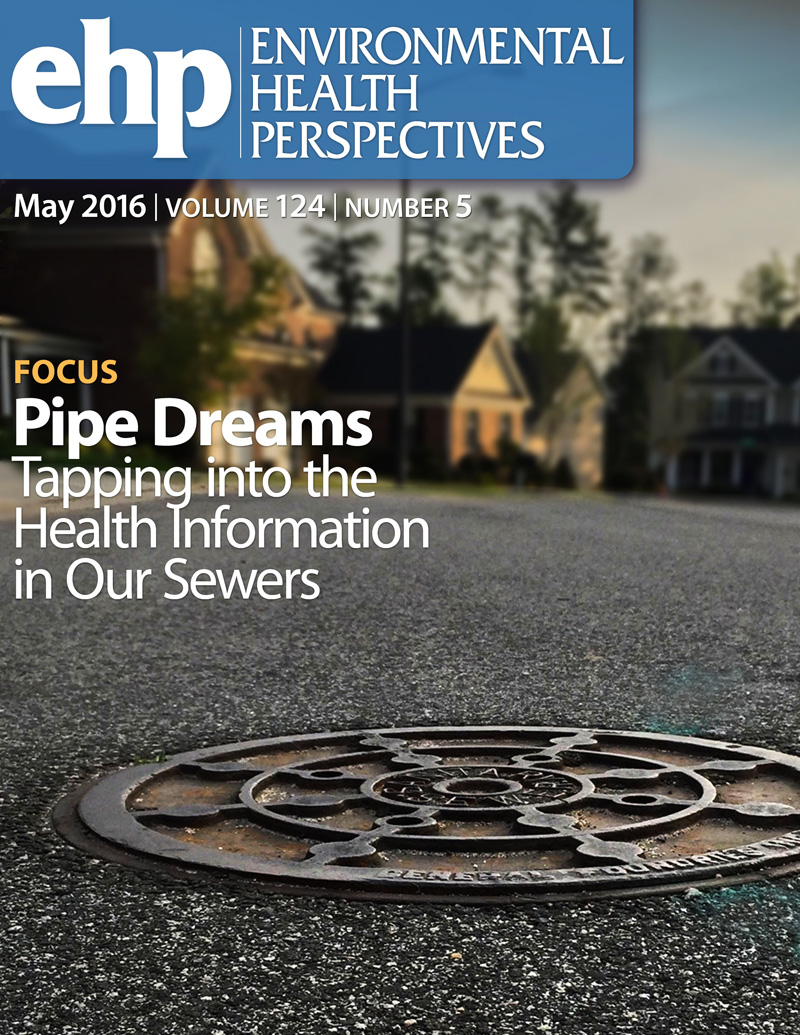Estimation of Dermal Exposure to Volatile Organic Compounds (VOCs) from Feminine Hygiene Products: Integrating Measurement Data and Physiologically Based Toxicokinetic (PBTK) Model.
IF 9.8
1区 环境科学与生态学
Q1 ENVIRONMENTAL SCIENCES
引用次数: 0
Abstract
BACKGROUND Increasing studies have informed noteworthy health risks associated with dermal exposure to volatile organic compounds (VOCs) from feminine hygiene products (FHPs). OBJECTIVES This study is to address the gap in understanding the absorption, distribution, metabolism, and excretion dynamics of dermal exposure to VOCs from FHPs, and to identify chemicals and products that could cause significant body burden. METHODS We used measured contents of eight widely present VOCs across five categories of FHPs to estimate dermal exposure, and applied a physiologically based toxicokinetic (PBTK) modeling approach to elucidate VOC toxicokinetics in human body tissues. Inhalation exposure estimates were derived from 20 air samples collected via passive sampling and analyzed using thermal desorption system coupled with gas chromatography-mass spectrometer. Predicted urinary VOC concentrations based on dermal and inhalation exposure were validated against 99 measurements from 25 females. RESULTS Via skin absorption, the estimated levels of most target VOCs in nearly all tissues, except adipose and the rest of the body, rapidly peaked within an hour of product use. Specifically, p-cymene was estimated to reach approximately 2.23 ng/mL in adipose tissue before decreasing over several hours due to efficient excretion pathways, including liver metabolism and exhalation. The model estimated that while the majority of absorbed VOCs (78.9%) were eliminated via liver metabolism, exhalation, and urine excretion, VOCs with logKow higher than 3.5, such as p-cymene, hexane, and n-nonane, exhibited a potential cumulative trend in adipose tissue. This resulted in the estimated VOC concentrations in adipose tissue being 1 to 4 orders of magnitude higher than those estimated in other tissues. Notably, in certain cases, n-nonane posed a potential non-cancer risk (up to 0.07), and benzene presented a notable cancer risk (up to 1.82 × 10-7), primarily attributed to wash and moisturizer, respectively. DISCUSSION These findings reveal potential significant body burden and health risks associated with dermal exposure to VOCs from FHPs, warranting further research and regulatory measures. Comprehensive assessment of internal exposure by integrating with toxicokinetic modeling to elucidate chemical distribution in various tissues is recommended, rather than solely measuring solely one type of biomarkers, to illustrate exposure variances and ensure accurate risk assessment.. https://doi.org/10.1289/EHP15418.皮肤暴露于女性卫生用品挥发性有机化合物(VOCs)的评估:整合测量数据和基于生理的毒物动力学(PBTK)模型。
背景:越来越多的研究表明,皮肤暴露于女性卫生用品(fhp)中的挥发性有机化合物(VOCs)存在值得注意的健康风险。目的本研究旨在解决皮肤暴露于fhp挥发性有机化合物的吸收、分布、代谢和排泄动力学方面的空白,并确定可能造成重大身体负担的化学物质和产品。方法采用测量的5类fhp中8种广泛存在的挥发性有机化合物的含量来估计皮肤暴露,并应用基于生理的毒物动力学(PBTK)建模方法来阐明人体组织中挥发性有机化合物的毒性动力学。通过被动采样收集20份空气样本,并使用热解吸系统和气相色谱-质谱联用进行分析,得出吸入暴露估计。基于皮肤和吸入暴露预测的尿液VOC浓度与来自25名女性的99个测量值进行了验证。结果:通过皮肤吸收,除脂肪和身体其他部位外,几乎所有组织中大多数目标挥发性有机化合物的估计水平在使用产品一小时内迅速达到峰值。具体来说,估计对伞花烃在脂肪组织中达到约2.23 ng/mL,然后在几个小时内由于有效的排泄途径(包括肝脏代谢和呼气)而下降。该模型估计,虽然大部分吸收的挥发性有机化合物(78.9%)通过肝脏代谢、呼气和尿液排泄被消除,但logKow高于3.5的挥发性有机化合物,如对花香烃、己烷和正壬烷,在脂肪组织中表现出潜在的累积趋势。这导致脂肪组织中VOC的估计浓度比其他组织中VOC的估计浓度高1到4个数量级。值得注意的是,在某些情况下,正壬烷具有潜在的非癌症风险(高达0.07),苯具有显着的癌症风险(高达1.82 × 10-7),主要分别归因于洗涤和保湿霜。这些发现揭示了皮肤暴露于FHPs挥发性有机化合物所带来的潜在重大身体负担和健康风险,需要进一步的研究和监管措施。建议通过结合毒性动力学模型来综合评估内部暴露,以阐明化学物质在各种组织中的分布,而不是仅仅测量一种生物标志物,以说明暴露差异并确保准确的风险评估。https://doi.org/10.1289/EHP15418。
本文章由计算机程序翻译,如有差异,请以英文原文为准。
求助全文
约1分钟内获得全文
求助全文
来源期刊

Environmental Health Perspectives
环境科学-公共卫生、环境卫生与职业卫生
CiteScore
14.40
自引率
2.90%
发文量
388
审稿时长
6 months
期刊介绍:
Environmental Health Perspectives (EHP) is a monthly peer-reviewed journal supported by the National Institute of Environmental Health Sciences, part of the National Institutes of Health under the U.S. Department of Health and Human Services. Its mission is to facilitate discussions on the connections between the environment and human health by publishing top-notch research and news. EHP ranks third in Public, Environmental, and Occupational Health, fourth in Toxicology, and fifth in Environmental Sciences.
 求助内容:
求助内容: 应助结果提醒方式:
应助结果提醒方式:


